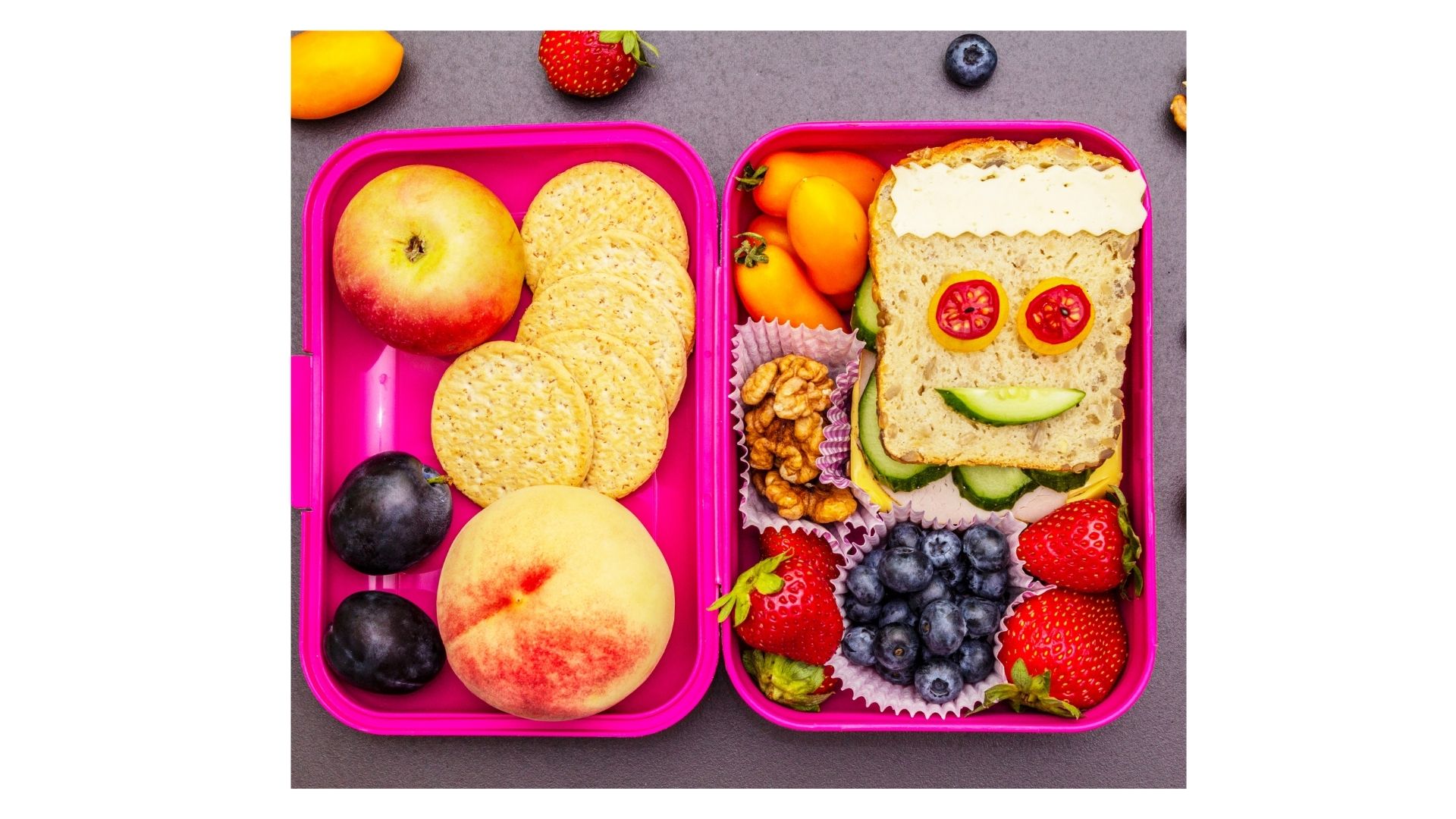Packing Healthy School Lunches
go.ncsu.edu/readext?816416
en Español / em Português
El inglés es el idioma de control de esta página. En la medida en que haya algún conflicto entre la traducción al inglés y la traducción, el inglés prevalece.
Al hacer clic en el enlace de traducción se activa un servicio de traducción gratuito para convertir la página al español. Al igual que con cualquier traducción por Internet, la conversión no es sensible al contexto y puede que no traduzca el texto en su significado original. NC State Extension no garantiza la exactitud del texto traducido. Por favor, tenga en cuenta que algunas aplicaciones y/o servicios pueden no funcionar como se espera cuando se traducen.
Português
Inglês é o idioma de controle desta página. Na medida que haja algum conflito entre o texto original em Inglês e a tradução, o Inglês prevalece.
Ao clicar no link de tradução, um serviço gratuito de tradução será ativado para converter a página para o Português. Como em qualquer tradução pela internet, a conversão não é sensivel ao contexto e pode não ocorrer a tradução para o significado orginal. O serviço de Extensão da Carolina do Norte (NC State Extension) não garante a exatidão do texto traduzido. Por favor, observe que algumas funções ou serviços podem não funcionar como esperado após a tradução.
English
English is the controlling language of this page. To the extent there is any conflict between the English text and the translation, English controls.
Clicking on the translation link activates a free translation service to convert the page to Spanish. As with any Internet translation, the conversion is not context-sensitive and may not translate the text to its original meaning. NC State Extension does not guarantee the accuracy of the translated text. Please note that some applications and/or services may not function as expected when translated.
Collapse ▲
Back to school season is here and it’s time to start thinking about school lunch. School lunches are designed to provide healthy food options for our children. Whether your child enjoys school lunch or you decide to pack your child’s lunch instead, it’s important to provide a nutrient packed meal that will fuel their bodies and brains. So you’re not sure where to begin this year? We’re here to help.
Here are a few simple tips on how to pack a nutritious school lunch box.
- Get your kids involved – When kids play a role in the planning and preparing of lunches, they are more likely to eat them. Give them age-appropriate tasks such as retrieving and putting items away, washing fruit and vegetables, using cookie cutters to make fun sandwich shapes, and putting the food into their lunch box. Agree on what goes into every lunch. Make a checklist of what your child likes in each category. For example: “The vegetables I will eat in my lunch are: baby carrots, green pepper slices with ranch dip, cherry tomatoes or a mini-salad.”
- Include multiple food groups – It’s important to include all five food groups in order for your child to get a variety of nutrients. These nutrients give your child the energy to keep up throughout the day and during after-school activities.
- Make lunches in advance – Prepare fruits and veggies at the beginning of the week and separate them into single-serve containers. Keep a variety of individual snack packages (fruit cups, carrots sticks, pretzels, popcorn, crackers, etc) in a designated container so they are easy to grab and add to lunches.
- Invest in a fun lunch box – Lunch boxes with compartments help cut back on the number of plastic bags used and help with portion sizes. Reusable baking cups are another great way to separate foods if you’re using a larger container. Insulated lunch containers work best to keep cold foods cold. Keep an insulated thermos on hand to send warm foods such as soups and leftovers.
- Have fun – Get creative by using cookie cutters to make different shapes out of bread, deli-meat, or cheese. Try slicing fruit into different designs or use a melon-baller to make spheres. Use kid-friendly skewers to make kabobs lined with cherry tomatoes, pickles, cheese cubes, and turkey.
- Don’t forget to hydrate – Send their favorite water bottle to school and encourage them to drink the whole thing twice during the day. If your child doesn’t love water, try flavored water or try adding fruit for a natural flavor.
If you need help with healthy lunch ideas, consider this delicious recipe from the University of Maryland Extension:
Homemade Applesauce
Servings: 10
Ingredients:
- 7 apples, washed, cored, and cut in half (no need to cut in half when using an apple corer and wedger)
- ½ cup water
- ¼ cup white or brown sugar
- 1 teaspoon cinnamon
Directions:
- In a large pot, add apples, water, and sugar.
- Cook apples, water, and sugar over medium heat for 15-20 minutes.
- Add cinnamon and stir before serving.
If the serving size is too large, put the extra applesauce into mason jars and freeze for later or gift them. If you’re interested in exploring more types of applesauce, try mixing the traditional flavor with different fruits.
For more information or for questions about healthy school lunches contact Sheila Gregory, Currituck County Family and Consumer Sciences Program Assistant at (252) 232-2261 or by email at sheila_gregory@ncsu.edu/.




